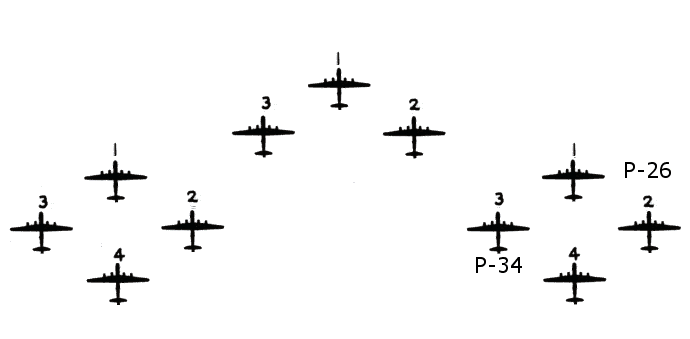| Crew
No. 26, Alexander Orionchek, 2nd Lt, Airplane Commander
went down 28 April 1945. The mission was Kushira Airfield.

Crew
No. 34 was flying in the number three ship in the second
sortie. Crew no. 26 was flying in number two ship in the
same sortie. Shortly after dropping our bombs, a Japanese
fighter rammed the right wing of Crew No. 26 ship knocking
off about 20 feet of the wing. We were flying at about
22,000 feet at the time. No. 26 crew immediately started
to fall. We waited to see if they would crash or level
off before deciding what action to take. Fortunately,
they leveled off at about 12,000 feet. We were still over
land at the time. When we say that they were not going
to crash, we went down to “buddy” them as
they were being attacked by three Japanese fighters. Their
gunners with our help managed to drive the fighters off.
The dive from 22,000 feet to the 12,000 ft altitude was
my fastest in a B-29. I could not operate the cabin pressure
not to have our ears feel the pressure.
Crew
No. 26 limped along, with Crew No. 34 tagging along, until
it was estimated to be 90 miles from the Japanese coast.
The plane had been gradually loosing altitude until it
hit the water. Crew No. 34 circled the area and counted
the men in the lifeboat. There were 12 men in the plane
and all had gotten in the lifeboat. Henry Snow was flying
with Crew #34 for experience as his crew had just gotten
over from the states. His flight engineer was flying for
the same reason with Crew No. 26
Crew
No. 34 threw out all of their emergency equipment, the
“Gibson Girl” radio, life rafts, food and
everything else that could be used by the downed crew.
While
circling the life boats, our navigator and radio operator
were contacting the Super Dumbos in the area. It was necessary
to pinpoint our location to let the Super Dumbos know
where we were. Our location was made from a fixed station
in the Aleutian Islands and Hawaii. By the time this had
all taken place and our fuel was getting low. The Super
Dumbo said it would be approximately 45 minutes before
they could arrive at our location. It was determined that
we could stay in the area approximately 25 minutes longer
without jeopardizing our ability to get to Iwo Jima. These
transmissions, of necessity, being so close to the Japanese
coast had to be in code. After remaining in the area approximately
30 minutes we headed for Iwo Jima. In an effort to gain
more airtime we ejected the our bomb bay gas tank and
removed and jettisoned the ammo from all the gun turrets.
When we landed on Iwo Jima, the chart indicated all the
gas had been used. No gas was visible in the tanks.
It
was late in the day when the report of the downed crew
was made on Iwo Jima. Three crews were sent out early
the next morning to locate the crew in the life boats.
These crews were Crew No. 23, Joseph J. Semanek, AC, Crew
No. 28, Charles B. Miller, AC and Crew No. 21, William
J. Senger, after spotting a downed crew in a life boat
and contacting a rescue, the three planes returned and
the search called off. When the rescued crew was identified
later it was not that of No. 26 Orionchek. Another search
team was sent out but nothing further was ever found. |





